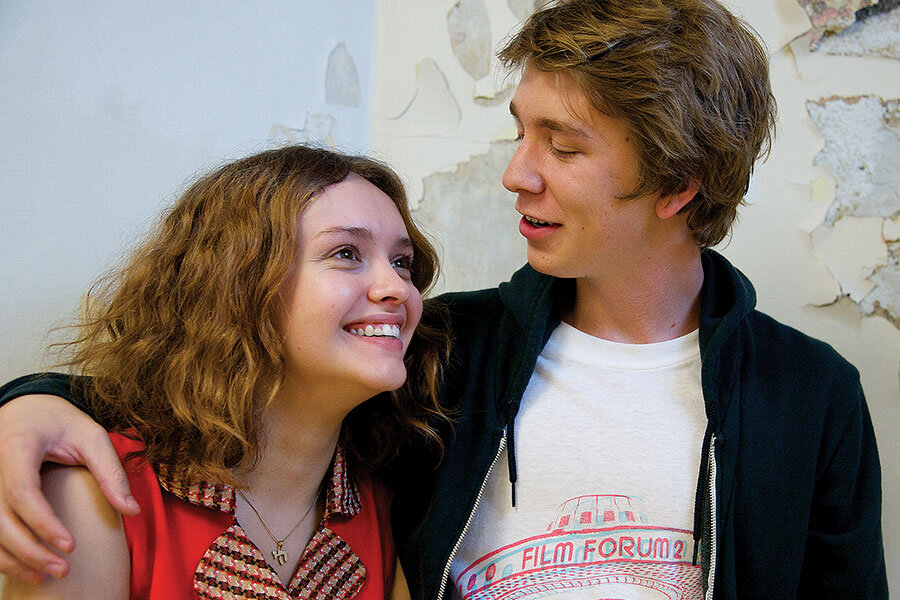'Me and Earl and the Dying Girl': The teenager story rings more true than false
Loading...
The funny-sad Sundance hit “Me and Earl and the Dying Girl” is a winning movie about losing. I didn’t always warm to its coy quirkiness, but it’s the rare American movie about contemporary teenagers that rings more true than false.
Greg (Thomas Mann) is a nondescript Pittsburgh high school senior with a supposedly foolproof formula for survival: Be friendly with all the cliques without joining any of them. At lunchtime, he and his best and only friend, Earl (R.J. Cycler), eat in an indulgent teacher’s office rather than brave the school cafeteria’s social gladiator pit.
When Greg’s mother (Connie Britton) strong-arms him into visiting Rachel (Olivia Cooke), a fellow senior newly diagnosed with leukemia, he balks. He barely knows Rachel, and assumes (rightly) that she would interpret the gesture as a pity visit.
Greg’s occasional voice-over narration fills us in on what he is thinking. When he and Rachel first connect, for example, we are informed that their relationship is not going to follow the predictable lovey-dovey route. Title cards periodically pop up, such as “Day 7 of Doomed Friendship.” But Greg’s narration, recorded after the events we are witnessing have long passed, is possibly unreliable. Case in point: About midway through the movie, he tells us not to worry because Rachel doesn’t die. Is he just trying to make us feel good?
Director Alfonso Gomez-Rejon and his screenwriter, Jesse Andrews (adapting his own novel), have a clear affection for these kids. They also are a lot more gooey than they let on. (Just like Greg.) Their pretense about avoiding sentimentality is just a decoy. “Me and Earl and the Dying Girl” is every bit as drippy as the conventions it pooh-poohs; it’s just cannier about how it twangs our heartstrings.
Knowing all this, I still didn’t much mind the manipulations. The film’s self-conscious, self-deprecating tone is in sync with how gawky, geeky teenagers try to have it both ways. It’s supercynical and supersappy at the same time. Greg has no illusions about being cool, but he has an essential decency that Rachel recognizes and elicits, despite his best efforts to appear aloof. His friendship with Earl also rings true, despite a running gag I couldn’t quite accept: The two boys have a passion for making home movies that lampoon the classic art films in Greg’s globe-trotting father’s collection. (Sample title: “A Sockwork Orange.”) Werner Herzog comes in for some heavy ribbing, and Truffaut’s “400 Blows” is practically a template for Greg’s own, milder form of rebelliousness. It’s fairly funny although the boys’ fixation on art house cinema, even as parody, seems more of a filmmaker’s conceit than that of precocious teens.
I could have done without the occasional animated sequences illustrating Greg’s fantasies, like the one where a moose (standing in for the resident high school hottie) unknowingly tramples a woodland mammal (himself). It’s too cutesy by half. At times, the facetiousness recalls “(500) Days of Summer,” a movie “Me and Earl” more often than not transcends. At least it’s less annoying about its romantic poses.
Mann is sometimes funny playing a nobody who is actually a somebody, but his hangdog winsomeness can get a bit wearying. Cycler and Cooke, though, are real finds. Cooke never allows us to feel sorry for Rachel, even when things are looking grimmest. It takes a real actress to pull that off.
Cycler’s Earl is a black kid from, literally, the wrong side of the tracks, but there is never a moment when we feel he is being utilized by the filmmakers to make racially charged points. Young as he is, Earl is his own man. He has a disdain for phoniness that Holden Caulfield would have appreciated. Come to think of it, J.D. Salinger might have smiled at this movie, except he didn’t like movies. Grade: B+ (Rated PG-13 for sexual content, drug material, language, and thematic elements.)







